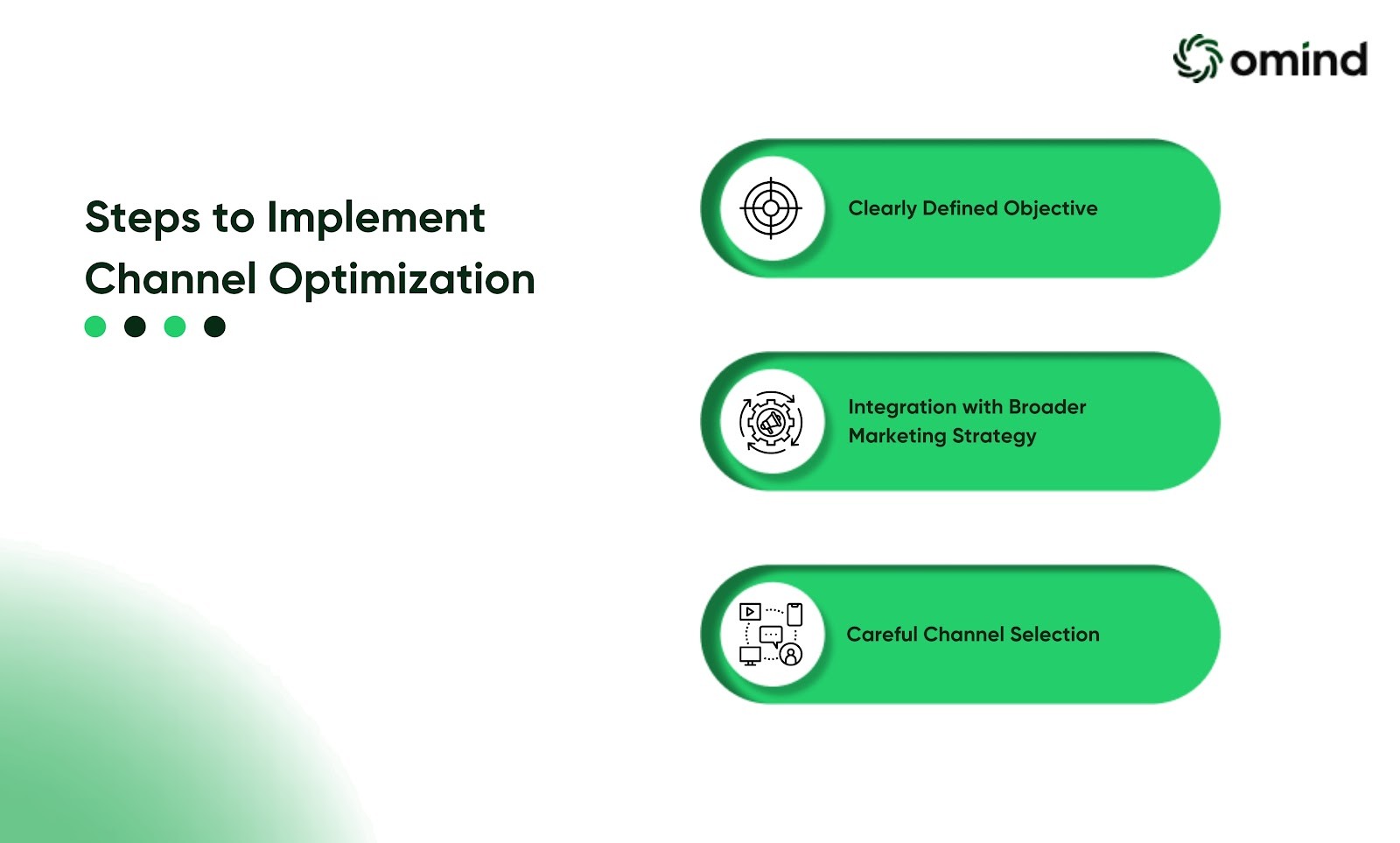With a wide selection of communication channels at their disposal, businesses face the challenge of selecting and optimizing the right platforms to reach their target audience. Channel optimization is the strategic process of aligning communication channels with consumer preferences to maximize efficiency, engagement, and ultimately, business outcomes.
By analyzing consumer behavior, preferences, and the performance of various channels, businesses can craft tailored communication strategies. This involves selecting the most suitable channels for different customer segments, crafting compelling content for each platform, and delivering messages at optimal times. The goal is to create personalized customer experiences that drive conversions.
Let’s now take a look at some tips on channel optimization.
Understanding Channel Optimization
Channel optimization is the strategic process of refining communication channels to deliver maximum impact on target audiences. We do this by looking at consumer preferences, behaviors, and the nuances of various communication platforms. By understanding how different segments of customers consume information and interact with brands, businesses can tailor their messaging and channel mix accordingly.
The effectiveness of channel optimization hinges on a comprehensive understanding of the target audience. Demographics, psychographics, and buying behaviors are crucial factors to consider. Businesses must also clearly define their channel goals, whether it's driving sales, enhancing customer engagement, or building brand awareness. With a clear objective in mind, organizations can evaluate the strengths and weaknesses of different channels to determine the optimal mix for their campaigns.
Steps to Implement Channel Optimization

Effective channel optimization begins with a clearly defined objective. This goal acts as the compass for the entire strategy, guiding channel selection, messaging, and performance evaluation. Whether it's driving immediate conversions, encouraging long-term customers, or enhancing brand perception, a well-articulated goal ensures that every subsequent decision aligns with the desired outcome.
Once the goal is established, channel optimization should be integrated into the broader marketing strategy. It’s not an isolated tactic but a core component of the overall approach to reaching and engaging customers. By aligning channel optimization efforts with other marketing initiatives, businesses can create a cohesive and impactful customer journey.
For example, if the goal is to increase website traffic, channel optimization might involve optimizing social media content for sharing, refining email subject lines to boost open rates, and implementing paid search campaigns to drive targeted traffic. By coordinating these efforts within a comprehensive marketing strategy, businesses can maximize their chances of achieving the desired outcome.
Careful channel selection is paramount. Consider factors like target audience demographics, preferred communication channels, and the nature of the message. Ensure content is tailored for each chosen channel, respecting format, length, and visual requirements. For a subset of the audience, implement a default channel strategy. For example, email might be the primary channel for most customers, but SMS could be used for urgent notifications.
Analyzing Channel Optimization Analytics
Data is the lifeblood of successful channel optimization. By meticulously tracking and analyzing key performance indicators (KPIs), businesses can gain invaluable insights into channel effectiveness. Metrics such as open rates, click-through rates, conversion rates, and customer lifetime value provide a clear picture of audience engagement and channel performance.
Looking deeper into the data reveals trends, patterns, and opportunities. For instance, analyzing audience distribution across different channels helps identify high-performing segments. Understanding message performance highlights which content resonates best with specific audiences. By identifying strengths and weaknesses, businesses can allocate resources effectively and optimize channel strategies accordingly.
Addressing data anomalies is crucial for accurate analysis. Missing data or undelivered messages can skew results and hinder decision-making. Implementing robust data quality checks and implementing contingency plans for such occurrences ensures that the insights drawn from the data are reliable and actionable.
Optimizing Different Communication Channels

Push notifications, emails, and SMS each possess distinct advantages and are best suited for specific communication purposes. Push notifications excel at delivering timely alerts and driving immediate actions. Emails offer a versatile platform for nurturing leads, promoting products, and building relationships. SMS, with its high open rates, is ideal for urgent messages, appointment reminders, and two-factor authentication.
To maximize the impact of these channels, it's essential to match the message to the channel. Time-sensitive updates, such as sale alerts or order confirmations, are well-suited for push notifications. Email is ideal for sharing detailed product information, personalized recommendations, and newsletters. SMS is perfect for concise, urgent messages that require immediate attention.
By segmenting audiences based on preferences, behaviors, and demographics, businesses can tailor messaging for maximum relevance. For instance, a fashion retailer might send personalized style recommendations via email to loyal customers, while using SMS to alert them about limited-time offers. Additionally, optimizing message delivery times based on audience behavior can significantly improve engagement rates.
Using Cross-Channel Messaging
Businesses can create better customer experiences by integrating multiple channels. Marketing automation tools streamline messaging flow, ensuring consistency and relevance. Build comprehensive customer journey maps to visualize touchpoints and optimize interactions. Implement cross-channel messaging for onboarding, re-engagement, abandoned cart recovery, and promotional campaigns.
Conclusion
Channel optimization is an ongoing process. Regularly analyze performance metrics and make data-driven adjustments to the strategy. Incorporate customer feedback to refine messaging and channel preferences. A well-optimized channel strategy is essential for driving customer engagement and business growth. By understanding consumer preferences, tailoring messages, and using data, businesses can create impactful communication experiences.
If you’d like a helping hand when it comes to channel optimization, Omind is your answer. Omind uses the power of AI to bring to you a conversational platform that helps visitors engage with your business and turn them into paying customers. To see how our platform works, schedule a demo today.
AUTHOR
Team Omind
Empowering Businesses with Unified Customer Experience Platform, Leveraging Advanced AI and Intelligent Automation
PRODUCT
Marketing AI
Share LINK
Related Blogs




